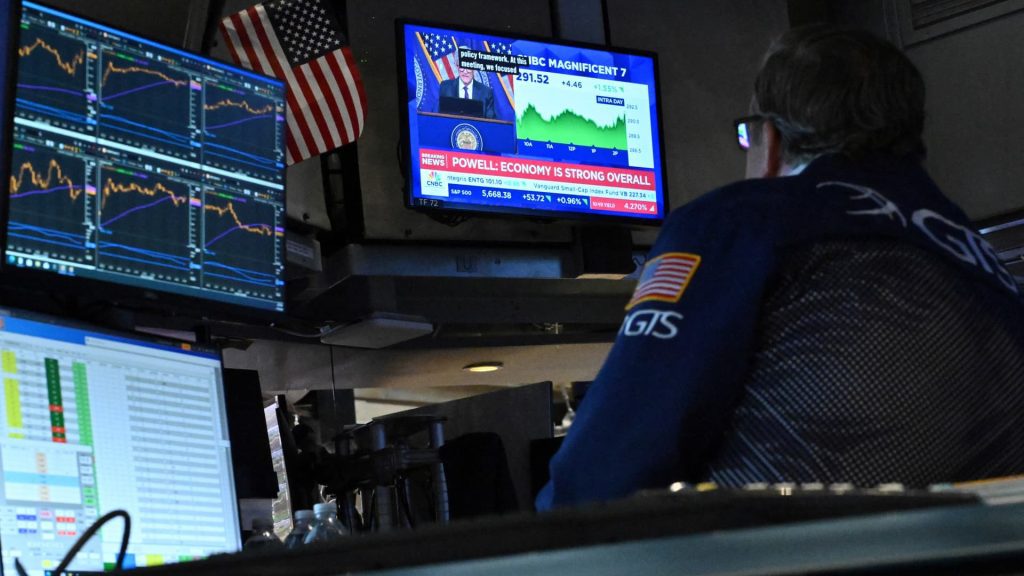The S&P 500 and Nasdaq kick off Monday’s trading session with their first positive week in five, aided by a late surge on Friday. For the past week, the S&P 500 recorded a modest gain of 0.2%, while the Nasdaq rose 0.5%. The Dow Jones Industrial Average experienced the strongest performance, climbing 1.2% after facing significant declines in the previous weeks.
This March has been particularly challenging, as consumer confidence continues to wane due to uncertainties surrounding President Donald Trump’s tariffs and the aggressive downsizing of the federal government. The Nasdaq is still firmly in correction territory, having declined over 10% from its peak on December 16. Meanwhile, the S&P 500 has fluctuated in and out of correction but remains down nearly 8% from its record high on February 19. The Dow has yet to enter correction status, closing Friday nearly 7% below its all-time high on December 4.
Last week, a key event for the market occurred on Wednesday when the Federal Reserve opted to maintain interest rates, indicating a preference to monitor the effects of Trump’s policies on economic growth and inflation. Following their March meeting, the Fed raised its inflation forecast while lowering growth expectations, which could be seen as a negative indicator. Central bankers still project two rate cuts in 2025, unchanged from their December stance, but the latest dot plots reveal a growing sentiment among members that fewer cuts might happen this year.
Trump has expressed a desire for more immediate rate cuts to mitigate the effects of impending tariffs, which are set to escalate on April 2. On Friday, he hinted at some “flexibility” regarding these tariffs. Additionally, Nvidia recently held its much-anticipated annual product showcase event, GTC, where CEO Jensen Huang addressed investor concerns. Despite facing skepticism, Nvidia showcased efforts to maintain its leading position in the AI chip market, unveiling new products and partnerships, including a collaboration with General Motors.
This week’s stock market activity has been lackluster, accompanied by a neutral S&P Short Range Oscillator. Only one trade was executed this week after a buying spree in the previous week when the market was considered oversold. On Wednesday, the portfolio added to its position in Goldman Sachs, countering an Oppenheimer downgrade, which cited obstacles from Trump’s policies affecting potential dealmaking. We believe Goldman’s stock price drop since its February highs reflects this disappointment, which seems to be easing now.
Looking ahead to the week, key focuses will be on economic data and earnings reports. The important economic highlight comes on Friday with the release of the Federal Reserve’s preferred inflation measure, the personal consumption expenditures (PCE) price index. Expectations for February indicate a 0.3% month-over-month increase and a 2.5% year-over-year gain, consistent with previous trends.
In terms of earnings, it will be a relatively quiet week with no major reports from portfolio holdings. However, notable companies reporting include KB Home, which offers insights into the U.S. housing market, relevant to Home Depot, and Paychex and Cintas, which can shed light on the economy and labor market. Upcoming consumer sentiment surveys from the Conference Board and the University of Michigan will also contribute to understanding economic conditions.



